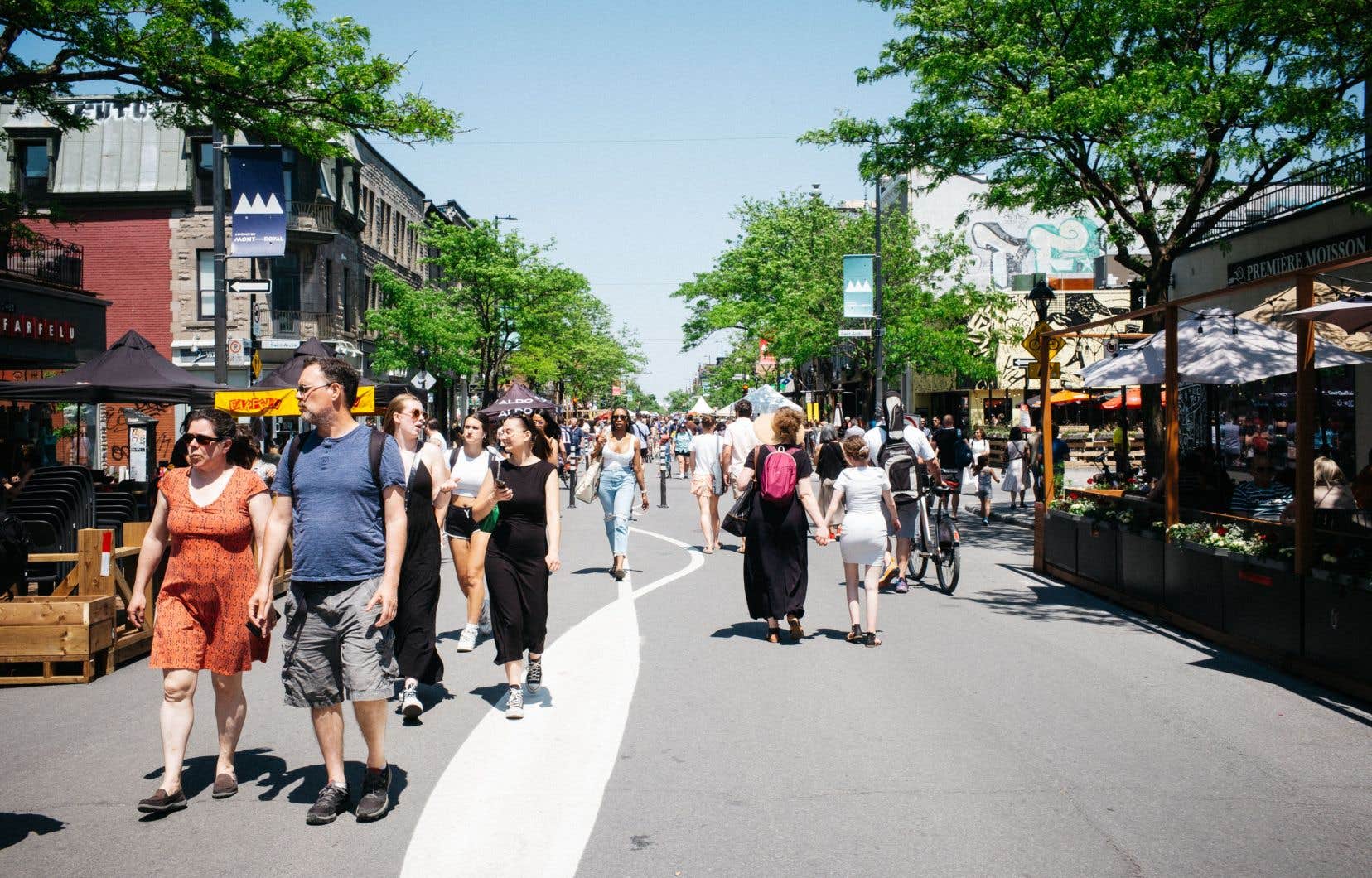The two largest arteries of the most densely populated neighborhood in Canada welcomed only pedestrians on their roadways this weekend for the first time in the recent history of Montreal. Tens of thousands of people thus invaded rue Saint-Denis and avenue du Mont-Royal, which marked a turning point in the pedestrianization of the metropolis.
Avenue du Mont-Royal, which opened to pedestrians three weeks earlier than last year, crossed a section of Saint-Denis closed to traffic for the Montreal Comic Strip Festival. Never had these two sections been closed to traffic at the same time.
“The first impressions are that one feeds the other,” says the mayor of the Plateau-Mont-Royal borough, Luc Rabouin, in an interview, confirming the success of the adventure launched urgently in 2020. .
“At the beginning, it was necessary to prove that[interdire une rue aux voitures] worth it. We have done economic studies on the impact of sales, and not just for restaurants and bars. »
The result is clear: “it’s not 100%, but in general it’s good for business”. Traffic increases and the number of reluctant businesses decreases each year. “There are businesses that come to settle for that”, even observes the mayor of the borough.
“In 2018, the rate of vacant premises [sur l’avenue du Mont-Royal] was 14.5%. It is down to 5.5%,” added the director general of the Société de développement de l’avenue du Mont-Royal, Claude Rainville.
“Unthinkable” just five years ago, he says, growing pedestrianization proves its worth. “If we stood at the corner of Mont-Royal and Saint-Denis, at the four cardinal corners, there was an incredible crowd. We are in the process of appropriating the collective space. »
Adapt to the human scale
“The 450 lands on Mont-Royal Avenue”. This quip, the owner of Pinion on Wheels, has often heard it in the past. “It’s not pejorative, but there was an activity on the weekend that we don’t have today,” notes Sylvain Lalonde and his 28 springs of experience in the sale of bicycles.
This era has changed a lot. It was before the DIX30. Before online shopping. The clientele becomes “more and more local” over time.
Despite a need for “constant adjustment”, he is delighted to see these customers arrive on foot rather than by car, like most of the merchants interviewed by THE Duty. Some of them, on the other hand, do not find their account at all.
Alexandr Fedorov is one of them. The owner of Antiquities and Currencies Odessa “does business with customers from all over Montreal, Canada,” he grumbles, leaning against the front of his business. “They can no longer find parking anywhere. […] Two days a week it’s full of people, but five days a week there’s nobody. »
Otherwise, it’s hard to come across a Montrealer who dislikes this pedestrian street on a sunny Sunday afternoon.
Many residents of the area would even like longer pedestrian seasons. Sébastien Picard, met by THE Duty, claims to have recently telecommuted on Mont-Royal Avenue. “The tables are cleaner than in the parks,” notes the young father. He even launched the idea of pedestrianizing the way during the winter. “A big cross-country ski run from here to the mountain would be great! »
Ten Montreal streets will remain pedestrianized this summer, and Mont-Royal Avenue for four months rather than three. But this priority for walkers will not extend beyond the start of the school year in September, say politicians. However, the number of pedestrian streets could increase.
